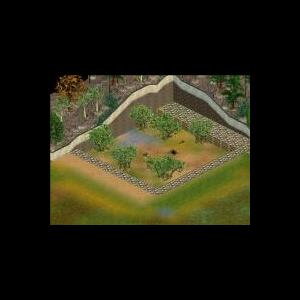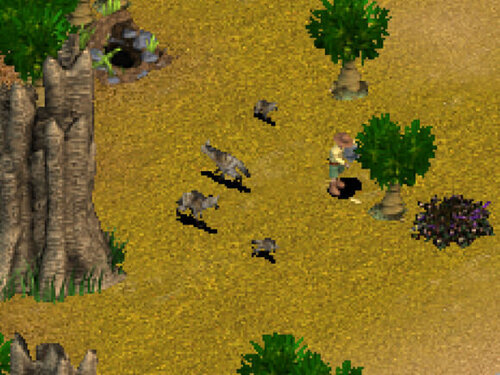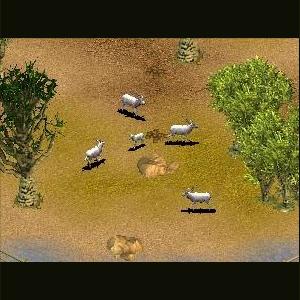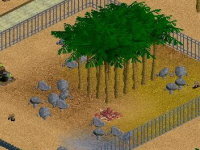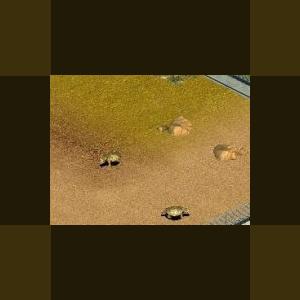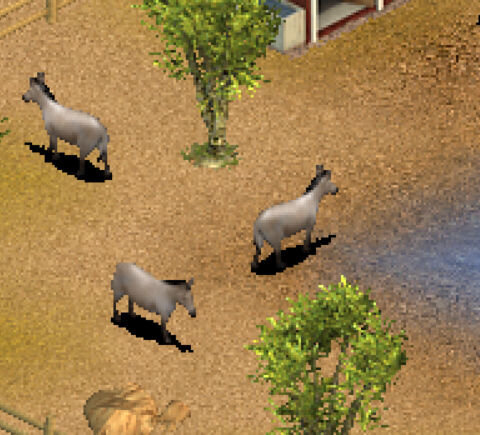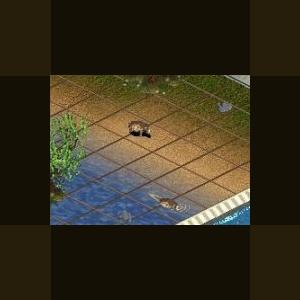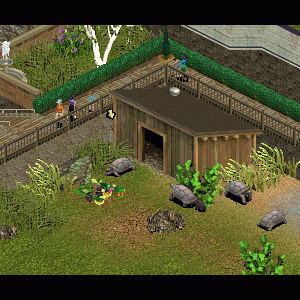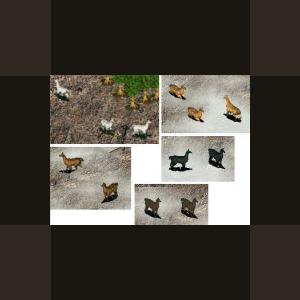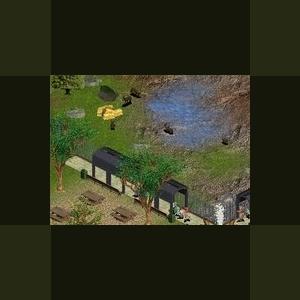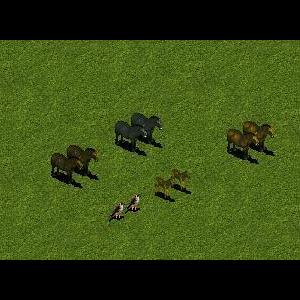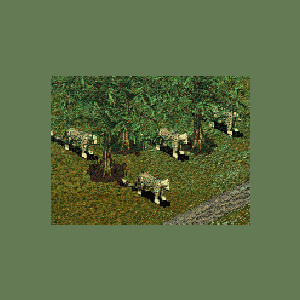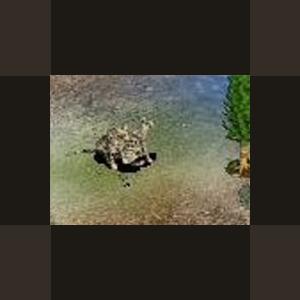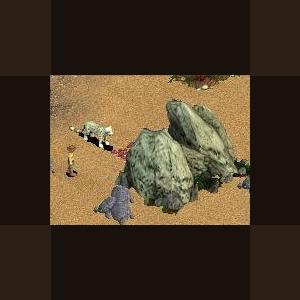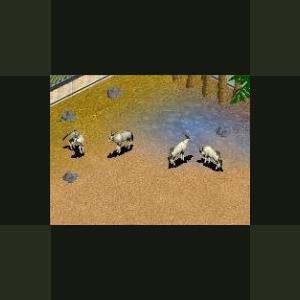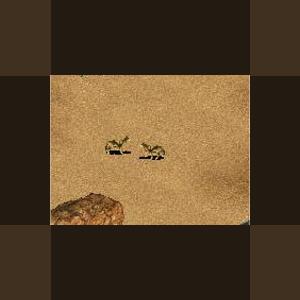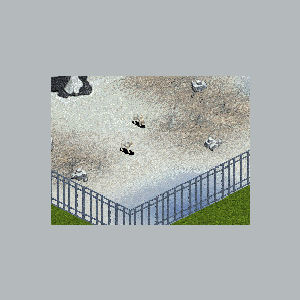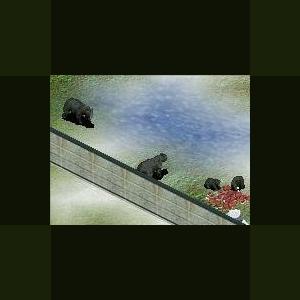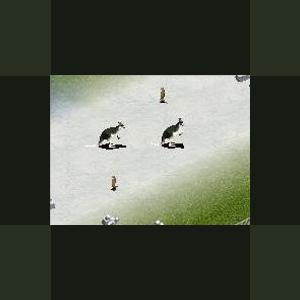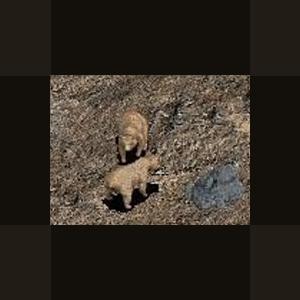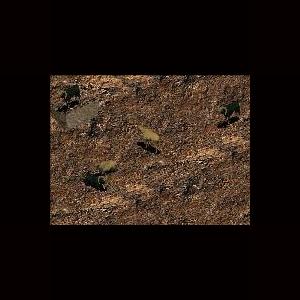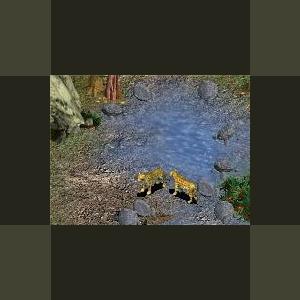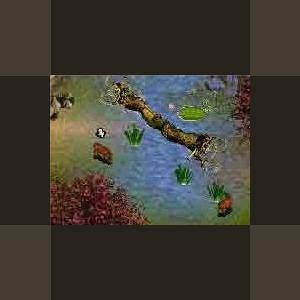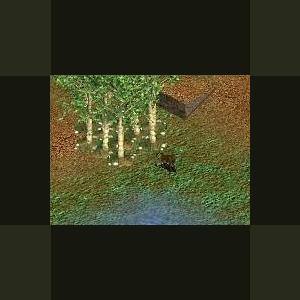280 files
-
Aardvark by LAwebTek
By Guest
Aardvark By LAwebTek
The aardvark is an odd-looking beast, resembling a giant, hump-backed rat with the head of an anteater, the snout of a pig, and the ears of a rabbit. It grows up to seven-and-a-half feet (2.3 meters) long, including its rat-like though thick and powerful tail. Adults average 110-150 pounds (50-70 kg), but may weigh as much as 180 pounds (82 kg).
Scientists placed the aardvark in its own order, Tubulidentata, which means tubule toothed. The name derives from the aardvark’s cheek teeth, which resemble flat-crowned columns. Each tooth is made of numerous tubular pulp cavities surrounded by hexagonal prisms of dentine.
Aardvarks are covered with thick pinkish-gray skin that protects them from insect bites and may even save them from predators. It is scantily covered with bristly hair varying from dull brownish-gray to dull yellowish-gray. Hair on the legs is often darker than that on the body. Low forequarters add to aardvark’s hump-backed appearance. Short, stocky legs end in toes bearing long, straight, strong, and blunt claws. There are four toes on each front foot, five on each hind foot. The toes are webbed at the base.
When pursued by enemies, aardvarks have three choices. The first two are run or dig! The aardvark isn’t known as a fast runner, though it is said to escape with surprising speed. However, aardvarks excel at burrowing. An aardvark digging in soft earth can beat several people armed with shovels! Its powerful forefeet can even tear through hard, sun-baked ground. What about that third choice? If cornered, an aardvark fights back. It may strike with its tail or shoulders or rear on its hind legs and slash with its clawed forefeet. A desperate aardvark may even roll on its back, slashing with all four feet.
Like most animals, aardvarks prefer to simply avoid predators. They have acute hearing, and flee for their burrows at the least hint of danger. But their eyesight seems to be poor; they frequently crash into trees, bushes, and other obstructions when running.
Aardvarks aren’t commonly seen because they’re mostly nocturnal. They usually spend the day in their burrows, curled up in a tight circle, the hind limbs and tail protecting the snout. Sometimes, an aardvark may be seen sunning itself at its burrow entrance in the early morning.
The aardvark is today restricted to Africa. It ranges from southernmost Africa (the Cape of Good Hope) to southern Egypt, but is generally widespread in suitable habitat south of the Sahara Desert. Aardvarks make homes by excavating burrows that are about ten feet (3 meters) long. An aardvark tunnel ends in a chamber large enough for the animal to turn in. (Aardvarks generally enter and exit headfirst.)
Aardvarks that burrow in areas prone to seasonal flooding are sometimes forced to evacuate their burrows. Aardvarks reportedly occupy termite nest as temporary shelters (perhaps when they’ve been flooded out of their burrows!).
Numerous aardvarks may burrow in same vicinity. Their abandoned burrows provide homes for many other animals, including large and small mammal predators, porcupines, some birds, and even crocodiles and pythons. In fact, the aardwolf (which is not related to the aardvark) usually lives in aardvark burrows.
It is its diet that caused the aardvark to evolve a form and habits similar to anteaters and other ant and termite-eating mammals. An aardvark’s powerful claws are adapted to breaking open hard clay termite nests. Its narrow head can be thrust into holes and crevices and it laps up insects with a sticky tongue that can be extended as much as twelve inches (300 mm).
Updated 2010-10-30
Just to save space with less in zip and smaller image.
Nothing new.
1,047 downloads
0 comments
Updated
-
Aardwolf by Khaydar
By Khaydar
Adopt an Aardwolf (Proteles cristata) for your zoos.
Animal guide:
Cannot be used in original Zoo Tycoon: Requires DD
Minimum happiness needed for chance of breeding: 90.
Liked foliage:
Acacia Caffra Tree, Thorn Bush and African savannah foliage
Liked rock:
Large Rock, Small Rock - Medium, Small Rock - Small
Animal can jump.
Number of animals allowed per exhibit: 1-2 with 20 squares each.
A suitable exhibit for 2 of this animal has 40 squares containing terrain of:
22 Savannah Grass, 8 Sand, 8 Dirt, 2 Fresh Water
using 4 grid squares filled with 4 Thorn Bush most liked plant
and using 8 Small Rock - Small most liked rock.
Preferred shelter: Large Burrow.
Updated: 18 January 2021 by fern to change the ztd and zip names (to avoid a file name conflict), and to compress the ztd better. None of the files inside the ztd were changed.
389 downloads
- living animal
- hyena
- (and 1 more)
Updated
-
Addax by Taz (Tasmanian_tiger)
By Fern
Addax
Author : Taz (Tasmanian_tiger)
Category : Critically endangered animal, Bovid, Antelope
Updated: July 20, 2013 by Jay to correct 1 animation view, to remove unnecessary files and configuration lines, to correct a configuration mistake done by the APE program concerning sounds, to make some minor adjustments to the animal info, and to make it like the Addax Family Rock as much as its most liked in-game rock. Please note that the version at Taz's site is no longer the most current version, since she is deceased.
Current ztd date: July 20, 2013
Compatibility : All Game Versions
Description : The Addax is a large antelope with a gray-brown coat that during the summer changes to white. Addaxes belong to a group of antelope with horse-like characteristics. This group is unique in that females have horns the same size as the males'. These antelope are similar to caribou in body structure and both have broad, flat hooves. These hooves enable the addax to travel great distances over sand and stone.
686 downloads
Updated
-
African Ruppell's Fox (Sand Fox) by Ghirin
By Guest
African Ruppell's Fox By Ghirin
The sand fox (Vulpes ruppelli), also known as Ruppell's fox, is native to arid and semi-arid regions in northern Africa, Arabia and central Asia, including stony desert, steppes, thornbush savannah, and dry woodland. They have a distinctive call, a "wow" sound ending in two yaps.
Sand foxes live in pairs or small family groups. They build dens, but also tend to move to a new location about once a week. Sand foxes hunt at night, preying on small mammals, insects, fruit and carrion.
Created by Ghirin 2004
Updated 2010-10-30
Just to save space with less in zip and smaller image.
Nothing new.
Updated August 18, 2018 by Cricket so that screenshot would show up again.
660 downloads
Updated
-
African Spurred Tortoise by Jordan
By Guest
African Spurred Tortoise by Jordan
The African Spurred Tortoise lives in the deserts of North Africa and is second in size only to the Galapagos Tortoise. It enjoys desert foliage like the quiver tree in its exhibit.
Updated 2010-10-30
Just to save space with less in zip and smaller image.
Nothing new.
662 downloads
0 comments
Updated
-
African Wild Donkey
By Khaydar
Adopt the endangered African Wild Donkey (Equus africanus) for your zoos
Animal guide:
Minimum happiness needed for chance of breeding: 90.
Liked foliage:
Tall Grass, Umbrella Thorn Tree, Doum Palm Tree (NA)
Liked rock:
Large Rock, Small Rock - Medium, Small Rock - Small
Animal can jump.
Number of animals allowed per exhibit: 1-4 with 25 squares each.
A suitable exhibit for 2 of this animal has 50 squares containing terrain of:
29 Sand, 10 Savannah Grass, 8 Dirt, 3 Fresh Water
using 3 grid squares filled with 4 Doum Palm Tree (NA) most liked plant
and using 12 Small Rock - Small most liked rock.
Preferred shelter: Large Stable.
358 downloads
- living animal
- khaydars animal
- (and 1 more)
Updated
-
Aldabaran Giant Tortoise by Jordan
By Guest
Aldabaran Giant Tortoise by Jordan
Giant tortoise from the Seychelles Islands. Loves to swim!
Updated 2010-10-30
Just to save space with less in zip and smaller image.
Nothing new.
560 downloads
0 comments
Updated
-
Aldabra Giant Tortoise by Vondell
By Cricket
Similar in size to the famous Galapagos giant tortoise but from the opposite side of the earth, the tortoises on the islands of the Aldabra Atoll in the Indian Ocean are some of the largest in the world.
Graphics and animations by Vondell.
Special thanks to Fern and Jay for file checks and assistance.
Please click on the picture to see the animations.
1,882 downloads
Updated
-
Alpaca Pack by Ghirin
By Guest
Alpaca Pack by Ghirin
This pack contains 5 extremely well-designed alpacas by Ghirin. They are: fawn, brown, dark brown, black, and white. All 5 alpacas are compatible with one another and with the official llama.
The alpaca (Lama pacos), a relative of the llama, is a domesticated camelid from the Andes Mountains of South America. Unlike the llama, the alpaca has been bred for its wool and is much smaller than the llama. The wool of the alpaca is among the finest in the world, bested only by that of the vicuna and certain breeds of goat.
Alpacas come in two wool varieties, suri and huacaya. The wool of the suri alpaca is finer and straighter than that of the huacaya. It falls in locks along the sides of the suri alpaca. The huacaya alpaca is more common than the suri; its wool is crimpy and gives the huacaya a "teddy bear" appearance. The wool of either variety comes in several colors, from white to black.
The peoples of the Andes domesticated the ancestors of the alpaca approximately 5000 years ago and these animals were used as a source of wealth.
*Inspired by the Zoo Tycoon Brains Trust at the Zoo Tek Zoo Tycoon Forums.
Updated 2010-10-30
Just to save space with less in zip and smaller image.
Nothing new.
734 downloads
Updated
-
Alpine Ibex by Paardjee
By Guest
Alpine Ibex by Paardjee
A different species of ibex for in your zoo.
Alpine ibexes are very cheerfull and lively they'll make your guests very happy
The Alpine Ibex (Capra ibex) commonly called by its French name: bouquetin, by its German name: steinbock, by its Dutch name: steenbok, by its Slovenian name: kozorog, or by its Latin nickname: capricorn—is the species of ibex that lives in the European Alps. The Spanish Ibex (Capra pyrenaica) and the Middle Eastern Nubian Ibex (Capra ibex nubiana) are very close relatives of the Alpine Ibex — the Spanish form is generally considered specifically distinct, but the Nubian is usually considered a subspecies of Alpine Ibex.
Habitat
Being an excellent climber, its habitat is the rocky region along the snowline above alpine forests of the European Alps. They tend to occupy steep, rough terrain at elevations of 6,500–15,000 feet.
Appearance
Male specimens commonly grow to a height of about 1 metre (3 feet) and reach a weight of about 100 kg (220 lb). Females are usually only half the size of males. Apart from size, males can also be distinguished by their prominent beard. Older males will tend to grow beards under their chin. Both male and female ibexes have large, backwards-curving horns although those of the male are substantially larger and can grow to an impressive length of up to 1 m. These horns are used to defend themselves from predators such as wolves, lynxes, bears and foxes. Small kids may also be susceptible to attacks from large predatory birds such as eagles. The Ibex has a brownish grey colouring in the summer which changes during the winter months to a richer, darker brown. It is related to the Nubian and Siberian ibexes.
Foraging behaviour
Ibexes are strictly herbivorous and survive on a diet of grass, moss, flowers, leaves and twigs. If leaves and shoots are out of reach, Ibexes often stand on their rear legs to reach this food. They eat during late afternoon and evening hours, descending at this time from the high steep cliffs and into the lower alpine meadows below. The rest of the day is spent in the higher altitude of the cliffs and hills. This pattern of remaining at higher altitudes during the bright daylight hours helps protect them from predators who do not inhabit such high terrain. In the winter, Ibexes also tend to live at lower altitudes since food is more scarce. The need to drink every few days in the summer causes the Ibexes to seek permanent residence within proximity to a dependable water source during this season. If predators are after them, Ibexes will hide in the rocks of the steep cliffs.
Updated 2010-10-30
Just to save space with less in zip and smaller image.
Nothing new.
345 downloads
0 comments
Updated
-
American Pack by And 1
By Fern
Creator : And 1
This pack is a small American animal pack. Animals: Black Mustang, Brown Mustang, Dark Brown Mustang, American Kestrel, and the Mesohippus.
Originally released at ZA 2004. Thank you And1 for allowing permission for the updated file to be loaded at Tek and DG as well as ZA.
Updated : August 22, 2011 by JohnRN1 to remove unused files, to change their Location to North America, to have the foliage tooltip appear in the expansion packs for the female and young, to remove unneeded lines in the configuration, and to make all of the sounds work. (Thanks, JohnRN1!) New sounds were added for the kestrel. In order to make the file smaller, the Przewalski's Wild Horse sounds were removed from the file for the mustangs and they were replaced with links to the Przewalski's Wild Horse's sounds. So you will need CC or the Endangered Species Download pack in order to hear those sounds. The original mustangs also had the same problem as the Przewalski's Wild Horse and showed the wrong animation for when the young got sick. That has been corrected. Some spaces and punctuation were added to the animal info and purchase menu tooltips. The adult kestrel poo was changed to the small type. The kestrel egg was changed to not move, to not need food or drink, to not poo, to not get sick, to not get angry, and to tolerate crowds.
520 downloads
0 comments
Updated
-
Amur Leopard by Gemma
By Guest
Amur Leopard by Gemma (ZTU Belgium)
Surveys in 200 estimated that there were fewer than 50 of these animals left in the wild. the critically endangered animal faces problems from loss of its food source, loss of habitat and from human conflict.
This amur leopard was created by our great designer Gemma and it likes to live in the forest with mixed floors and forest trees. What do you want more to live in? Great animal!
Compatible with all versions.
Updated 2010-10-30
Just to save space with less in zip and smaller image.
Nothing new.
Updated: 6th January 2013 by JohnT and Jay:
The ZTU Amur Leopard was updated to not crash when used in a non-English Zoo Tycoon, to disallow it being placed on water terrain being that it does not have swim graphics, to like all Coniferous objects which is its preferred habitat, to add sounds for when it is picked up or put down, to add the preferred foliage tooltip for the female and young, to change its location to Southeast Asia, to make its configuration more efficient, to remove unused files, and to correct some grammar in the animal info.
651 downloads
Updated
-
Amur Leopard by Moondawg
By Guest
Amur Leopard by Moondawg
The Amur Leopard (Panthera pardus orientalis or Panthera pardus amurensis) is the rarest subspecies of leopard, and the rarest cat on Earth. . A species of leopard that lives in the northernmost climate, they are facing extinction, as there are less than forty Amur leopards left living in the wild.
Of the eight subspecies the Amur, or Far Eastern leopard (Panthera pardus orientalis) shows the strongest divergence in coat pattern. The coat is pale cream (especially in winter) and has widely spaced rosettes with thick, black rings and darkened centres. The length of the coat varies between 2.5cm in summer and 7.5cm in winter.
The Amur leopard (Panthera pardus orientalis) is the northernmost of the eight leopard subspecies. The Amur leopard's range is overlapping with that of the Amur tiger or Siberian Tiger which range extends further to the north. The Amur leopard's historic range extended throughout northeastern ("Manchurian") China, the southern part of Primorsky Krai in Russia and the Korean Peninsula. This range shrank dramatically during the 20th century, due primarily to habitat loss and hunting. Today, it is critically endangered with only 27 to 34 individuals remaining in Southwest Primorye. There are probably up to 10 animals scattered throughout the Chinese Jilin and Heilongjiang Provinces, with the majority of animals concentrated near the Russian border.
The Amur leopard probably went extinct in the wild in South Korea in the late 1960s, although some recent, unconfirmed reports suggest that a few leopards may remain in and around the demilitarized zone between North and South Korea. There are likely still leopards in the rugged northern region of North Korea near the Chinese border, and it is also likely that animals from Southwest Primorye in Russia occasionally cross the border into North Korea, but reliable information is lacking.
The Amur leopard is listed as Endangered by the IUCN and is on CITES Appendix I for protection status.
There are approximately 300 Amur leopards in captivity, mostly in zoos in Europe, North America and countries of the former Soviet Union. Most, but not all, of these leopards are in zoos participating in managed conservation breeding programmes.
· Poaching of leopards and their prey species
Poachers include both poor local villagers and newly rich Russians, mainly from the city of Vladivostok, as well as Chinese nationals who illegally cross the border into Russia. Russian hunters kill many more deer than is officially allowed and Amur leopards are sometimes shot or killed with snares as well. Since 2002 skins or corpses of nine Amur leopards killed by poachers were found in Russia and at least two leopards were killed in China.
· Loss of forest habitat due to frequent fires
The forests on which Amur leopards depend slowly disappear as a result of frequent fires. Local villagers start fires for various reasons, but mainly to stimulate the growth of ferns that are a very popular ingredient in Russian and Chinese dishes.
· Negative impacts of inbreeding
Loss of genetic diversity in the small and isolated Amur leopard population may cause inbreeding depression (reduced numbers due to reduced reproduction and lifespan and increased vulnerability to diseases). However, the results of research so far are inconclusive and additional information on the effects of inbreeding is needed before conclusions can be drawn.
· Development projects
Southwest Primorye is located close to the Russian borders with China and North Korea, making it an attractive area for infrastructure projects such as new railways, gas and oil pipelines and ports. In 2005 and 2006 the Zoological Society of London and other ALTA partners led a successful international campaign against a plan to build an oil pipeline terminal on the coast of the Sea of Japan in the leopard’s range.
· Lack of political commitment to conservation
In recent years nature in Russia has suffered from a lack of political interest in conservation. Negative developments since 2000 include the abolishment of the State Committee for Nature Conservation, revoking the law enforcement rights of Inspection Tiger (an anti-poaching brigade for protection of tigers and leopards), and a reduction of the number of field inspector for protection of forests and animals by approximately 80%.
Male Amur leopards weigh 32-48 kg, with exceptionally large males up to 60-75 kg. Females are smaller than the males at 25-43 kg.
The main prey species of the Amur leopard are roe and sika deer, along with hares and badgers.
Whilst it has been found in other regions that leopards do not do well in areas where they share territory with tigers, this has not proved to be the case in Russia. Studies have indicated that an increased tiger population in the Southwest Primorye area has not adversely affected the leopard population.
Amur leopards in zoos show some evidence of breeding seasonalilty with a peak in births in late spring/early summer. After a gestation period of around 12 weeks cubs are born in litters of 1-4 individuals, with an average litter size of just over 2. The cubs will stay with their mother for up to two years before becoming fully independent. Females first breed at an age of 3-4 years.
In the wild, leopards live for 10-15 years and they may reach 20 years in captivity.
Updated 2010-10-30
Just to save space with less in zip and smaller image.
Nothing new.
573 downloads
0 comments
Updated
-
Arabian Leopard by Jaguarkid
By Guest
Arabian Leopard by Jaguarkid
Arabian Leopards (Panthera pardus nimr) are critically endangered felines located in Asia and are the most largest and widely distributed cat in Arabia. Arabian leopards are subspecies of leopards most closely related to African Leopards. Arabian Leopards were classified as critically endangered in 1996.
Until the later sixties, Arabian Leopards were common and widely distibuted from the Yemen Highlands through Egypt's Sinai Peninsula. There are smaller populations found in deserts.
Arabian Leopards have no natural predators besides Humans. Their diet consists of mountain gazelles, lizards, insects, smaller rodents such as hares, birds, and have been known to scavage larger prey. Arabian Leopards generaly weigh 65 punds for males and 45 pounds for females.
The coat of an Arabian Leopard varies from pale white-yellow to a deep golden tone. Arabian leopards have very larger territories (Males generally have larger territories than females). Arabian leopards are very solitary and only come together to mate wich usually lasts 5 days.
Young leopards do not leave their den until they are at lease 4 weeks olf and remain with thier mother for two years while they learn to survive on their own.
This subspecies is critically endangered and there are an estimated less than 200 of them left in the Arabian Peninsula. These leopard's greatest threats are habitat destruction. They are also threatened by hunters and farmers creating a lack of population and prey. Poisoning and killing have caused their population to decline and will likely go extinct if no conservation strategy is used.
Source: Wikipedia Created by Jaguarkid140
Updated 2010-10-30
Just to save space with less in zip and smaller image.
Nothing new.
652 downloads
0 comments
Updated
-
Arabian Oryx by Jordan
By Guest
Arabian Oryx by Jordan
The Arabian Oryx is a highly endangered antelope living in the barren steppes, semi-deserts, and deserts of the Arabian peninsula. Only a few hundred remain in the wild.
Updated 2010-10-30
Just to save space with less in zip and smaller image.
Nothing new.
456 downloads
0 comments
Updated
-
Arabian Wolf by Ghirin
By Guest
Arabian Wolf by Ghirin
The Arabian wolf (Canis lupus arabs) is an endangered subspecies of wolf from the Middle East. Unlike northern wolves, Arabian wolves live in pairs or small groups.
Reference:
www.Wikipedia.com
Created by Ghirin 2006
Updated 2010-10-30
Just to save space with less in zip and smaller image.
Nothing new.
485 downloads
0 comments
Updated
-
Arctic Fox by Hit4Life and LAwebTek
By Guest
Arctic Fox by Hit4Life and LAwebTek
Arctic Fox - one of the original downloads from Zoo Tek.
Because of its thick coat, it is able to survive in freezing cold temperatures. Thick hair on the pads of their feet protect their feet from freezing and help them to walk on the ice. The Arctic fox can walk on ice without slipping. It uses ice floes to travel in search of food in the winter.
It can curl up in the snow and cover its nose and face with its bushy tail to keep warm. In the summer the fox will hide food in its den or under rocks. This is how it stores food for later use.
The Arctic fox is small (about the same weight as a cat) with short legs and short rounded furry ears. The bushy tail is about 30 cm. long. Its bushy fur coat makes it look much larger than it really is. Near the end of summer the grayish brown coat of the Arctic fox begins to grow thicker. The color of the fur turns gray and then white. The oily fur sheds water and helps to keep the fox dry.The female may have 4 to 11 pups. The average litter is 6 or 7 pups. She can have two litters a year. The babies are born in a den or burrow in late spring. A baby fox is the size of a kitten. Both parents take care of the blind cubs. At two weeks the cubs open their eyes. At three weeks they go outside and begin to explore.
To feed a litter of ten the parents must kill about thirty lemmings a day. When their family is almost grown, the parents feed them over a hundred lemmings a day! The young foxes are taught how to hunt and are independent by fall. The young males leave the family and form their own groups. The young females stay with the family group.
They prey on voles, lemmings, hares, ground squirrels, birds and birds' eggs. Foxes that live near the coast feed on shellfish, sea urchins and other shore animals. They check the shoreline for dead seals, whales, and dead fish . When meat is not available the Arctic fox eats fruit and berries.
The Arctic fox will even kill baby seals if the fox can find the seal's den in the snow .
The Arctic fox walks along the top of the snow and listens for small animals running under the snow. When they hear something, they jump up and down to break through the snow with their front paws. Once they break through, they can grab their prey.
Updated 2010-10-30
Just to save space with less in zip and smaller image.
Nothing new.
Updated: July 25, 2009 to allow the arctic fox to swim on water terrain without ZT crashing and to change the ztd name because there are multiple arctic foxes amongst the different sites.
Updated: January 15, 2021 by fern to stop the arctic fox from disliking itself.
Current arctic fox_h4_LA.ztd dated 15 January 2021
Note: Previous ztd names: arctic fox.ztd, ArcticFoxbyHit4LifeandLAwebTek.ztd
462 downloads
0 comments
Updated
-
Arctic Fox by Ryno
By Guest
Arctic Fox by Ryno
The Arctic fox has smaller, more rounded ears, a more rounded braincase, and a slightly shorter and broader muzzle than the red fox, Vulpes vulpes (Clutton-Brock et al. 1976). Its feet are furrier than those of other foxes.
Updated 2010-10-30
Just to save space with less in zip and smaller image.
Nothing new.
603 downloads
0 comments
Updated
-
Arctic Glacier Bear by Ghirin
By Guest
Arctic Glacier Bear by Ghirin
The glacier bear is a rare color phase of the American black bear.
Glacier bears are various shades of blue-gray and are found in southeastern Alaska, northwestern British Columbia and the southwestern Yukon Territory. The undercoat of glacier bears is blue-black and the outer guard hairs are white with silver tips. The blue-gray color serves as camouflage against a backdrop of frozen ice.
By Ghirin 2008
Updated 2010-10-30
Just to save space with less in zip and smaller image.
Nothing new.
393 downloads
0 comments
Updated
-
Arctic Meerkat by Jordan
By Guest
Arctic Meerkat by Jordan
Arctic meerkats are rare creatures that live happily with arctic kangaroos.
The arctic meerkat is a rare creature from the frozen wastes of Antarctica. Only recently discovered by a Tek Phoenix naturalist, they bear many similarities to a previously known species, the arctic kangaroo, with whom the meerkats peacefully share a habitat.
Compatible with Devona's Arctic Kangaroo
Made for Pukkie
Updated 2010-10-30
Just to save space with less in zip and smaller image.
Nothing new.
305 downloads
0 comments
Updated
-
Arctodus Simus by Moondawg
By Guest
Arctodus Simus by Moondawg 2008
Arctodus, is also known as the Short-Faced Bear. One species, the Giant Short-Faced Bear (Arctodus simus), is the largest bear that ever lived based on fossil finds. It lived in prehistoric North America from about 800,000 to 12,500 years ago.
Short faced bear (Genus: Arctodus) is an extinct animal of prehistoric bears of the subfamily Tremarctinae. Arctodus simus, along with many other large mammals, became extinct during the Pleistocene epoch. It was preceded in time by A. pristinus, an evolutionary cousin or even ancestor of A. simus, proportionally shorter of leg and longer of muzzle
The short-faced bears belonged to a group of bears known as the tremarctine bears or running bears, which are endemic to the New World. The earliest member of the Tremarctinae was Plionarctos, which lived in Texas during the Pliocene Epoch, (2-5 mya). This genus is considered ancestral to Arctodus, as well as to the modern spectacled bear, Tremarctos ornatus. Although the early history of Arctodus simus is poorly known, it evidently became widespread in North America by the Kansan age (about 800 kya).
Arctodus simus stood as high as two meters (seven feet) at the shoulder on all four legs. When standing bipedally, the animal was over 3.3 m (10 feet) in total height, with a possible reach of almost 4.2 m (14 feet). It is estimated to have weighed 600-860 kg (1300-1900 pounds), around the same weight of its contemporary (or slightly larger) the grizzly bear. The largest specimens were found in Alaska and the Yukon Territory. Males were 20% bigger than females.[3] It was the largest land predator during the Ice Age in North America. The skull was unusual due to its lack of a well-defined forehead and the presence of a short broad muzzle, resembling that of Panthera rather than that of any modern bears. The muscles which passed between the broad cheek bones to power the lower jaws were extremely well-developed and are thought to be adapted for bone crushing in order to obtain the rich marrow. An Arctodus lower jaw can be distinguished from those of the genus Ursus by the slanting ridge dividing muscle attachment areas. Rather than having a waddling gait like modern bear species, Arctodus had toes extending straight forward, presumably being able to move with greater ease. In addition, unlike Ursus, Arctodus had a passage on the lower inside portion of the humerus for a slip of muscle (entepicondylar foramen).
Arctodus had a very short, broad muzzle, the skull having an olfactory area twice as large as that of a grizzly, and this, along with its great height, likely allowed the bear to identify a carcass from much greater distances. The jaw bone was massively foreshortened as in a feline, allowing Arctodus to eat even bone and marrow.
There are currently two recognized subspecies; the large specimens of Alaska, Yukon, Nebraska, California (Irvington) and perhaps Utah are called A. s. yukonensis, while the smaller specimens of Rancho La Brea are A. s. simus.
It was distinguished from its cousin (and possible ancestor) Arctodus pristinus by its bigger, broader, more crowded teeth, its shorter face, and its relatively longer legs.
Analysis of A. simus bones show it occasionally suffered from diseases such as osteomyelitis, as well as tuberculosis-like and possibly syphilis-like infections.
Analysis on Arctodus bones showed high concentrations of nitrogen-15, a stable nitrogen isotope accumulated by meat-eaters with no evidence of ingestion of vegetation. A. simus was an obligate carnivore, and as an adult would have daily required 16 kg (35 pounds) of flesh to survive.
One theory of its predatory habits envisions Arctodus simus as a brutish predator that overwhelmed the large mammals of the Pleistocene with its great physical strength. This idea is considered problematic, as Arctodus, though very large, was quite gracile in build. In order to bring down fellow megafauna, this bear would have had to have been a more robust creature, with a denser skeletal structure. Other experts think the long-legged Arctodus was able to run down smaller Pleistocene herbivores such as steppe horses and saiga antelopes in a cheetah-like fashion. However, in this scenario, the bear’s sheer physical mass would be a handicap. Arctodus skeletons do not articulate in a way that would have allowed for quick turns, an ability required of any predator that survives by killing agile prey. Dr. Paul Matheus, paleontologist at the University of Alaska Fairbanks, determined that Arctodus' moved in a pacing motion like a camel or horse, making it built more for endurance than for great speed. Arctodus simus, then, was ill-equipped to be an active predator, leading some to conclude that it was a kleptoparasite, using its enormous size to intimidate smaller predators such as dire wolves, Smilodon and American lions from their kills.
Though seen by some as primarily a scavenger, its fearsome natural weapons could have allowed it to attack slow-moving animals such as the Megatherium, according to U.S. National Park Service paleontologist Greg McDonald. Despite being largely herbivorous, Megatherium might also have scavenged on carcasses, possibly as a competitor to Arctodus
The giant short-faced bear became extinct some 12 kya, perhaps partly because some of its large prey died out earlier, and partly also because of competition with the smaller, more omnivorous brown bears that entered North America from Eurasia. Since its demise coincides with the development of the Clovis technology and improved hunting techniques by humans in North America, hunting pressure may also have contributed to its extinction, both directly (human hunting) or indirectly (due to the depletion of other large mammals on which it may have followed for its kills or depended on as prey).
Updated 2010-10-30
Just to save space with less in zip and smaller image.
Nothing new.
556 downloads
0 comments
Updated
-
Argali by Ghirin
By Guest
Argali by Ghirin
The argali (Ovis ammon) is the largest species of wild sheep in the world.
Distinct populations of argali are found throughout the highland regions of central Asia, including nations such as Mongolia, China, and Kazakhstan.
Like other wild sheep, argalis live in herds segregated by gender. Females will separate from the herd prior to birth and returns a few days afterward with her lamb.
Argalis vary in color based on location, but the basic color is grayish brown.
Inspired by the Zoo Tycoon Brains Trust at the Zoo Tek Forums.
Reference:
http://www.ultimateungulate.com/Artiodactyla/Ovis_ammon.html
Created by Ghirin 2005
Updated 2010-10-30
Just to save space with less in zip and smaller image.
Nothing new.
357 downloads
0 comments
Updated
-
Arizona Jaguar by Ghirin
By Guest
Arizona Jaguar by Ghirin
The Arizona jaguar (Panthera onca arizonensis) was the northernmost subspecies of jaguar. It was also one of the largest subspecies. Unlike the most familiar tropical jaguars of Central and South America, the Arizona jaguar lived in the dry highlands of the southwestern United States.
The last sightings of the Arizona jaguar were in 1905. The subspecies has been officially declared extinct.
Reference:
The Doomsday Book of Animals. Day, 1981.
Created by Ghirin 2004
Updated 2010-10-30
Just to save space with less in zip and smaller image.
Nothing new.
557 downloads
0 comments
Updated
-
Arkansas Razorback by Voolfie
By Guest
Arkansas Razorback by Voolfie
The razorback is thought to have evolved from domestic pigs that Spanish conquistador, Hernando de Soto, and his expedition brought when they explored the Mississippi Valley region. Some would have been bartered with the local Indians, while others would have strayed from the expedition into Arkansas. After many generations in the wild, they reverted into thin, long-legged, mean hogs. Protruding tusks developed in long snouts for rooting and fighting. The name "razorback" referred to the sharp backbone trimmed with long bristly hair. As Arkansas become populated, homesteaders would hunt these new natives. Some were even captured and raised on the farm. With the coming of the railroad some would escape from their pens and get on the tracks.
One nineteenth century farmer wrote a poem and sent it to the local railroad claim agent: My razorback strolled down your track, A week ago today. Your #29 came down the line, And snuffed his life away.You can't blame me, the hog you see, Slipped through a cattle gate, So kindly pen a check for ten, The debt to liquidate. A few days later, he was surprised to receive the following: Old #29 came down the line, And killed your hog, we know, But razorbacks on railroad tracks, Quite often meet with woe. Therefore, my friend, we cannot send, The check for which you pine, Just plant the dead, place o'er his head, Here lies a foolish swine. (Previously published in RootsWebReview: Vol. 5, No. 12, 20 March 2002 with thanks to Nancy Lambert nlambert@pdnt.com]. Moving along to 1909, razorbacks in the wild were becoming a rare sight. That was the year that then University of Arkansas football coach, Hugo Bezdek, told his victorious team and student population- they played "like a wild band of Razorback Hogs." So as of the 1910 season the University of Arkansas' mascot has been a razorback. The team colors are red and white - naturally the razorback mascot is bright red. This Arkansas Razorback for your zoo enjoys deciduous forests, and dogwood trees.while rooting through the rolling Ozark forests. In recreating this extinct creature, please forgive the uncontrollable whim to tweak the DNA - making it RED.
Special thanks to Ghirin for showing me how to strive for perfection.
The coloring was done by Ghirin, and with her help I changed the rest.
Please enjoy, voolfie
p.s. don't forget to read the c.1880 poem i found -it is in the
description.
Updated 2010-10-30
Just to save space with less in zip and smaller image.
Nothing new.
450 downloads
0 comments
Updated
-
Arunachal Macaque by Ghirin
By Guest
Arunachal Macaque by Ghirin
Arunachal macaques live at high elevations in the eastern Himalayas.
The Arunachal macaque (Macaca munzala) is the most recent primate to be described by science. It is native to the Arunachal Pradesh region of India in the eastern Himalayan region. This macaque prefers living in the deep forest, but will come out to raid crops.
*Inspired by the Zoo Tycoon Brains Trust at the Zoo Tek Forums.
Reference: http://www.ncf-india.org/
http://news.bbc.co.uk/1/hi/sci/tech/4101001.stm
Created by Ghirin 2005
Updated 2010-10-30
Just to save space with less in zip and smaller image.
Nothing new.
391 downloads
0 comments
Updated

